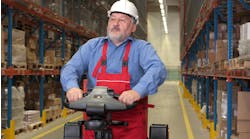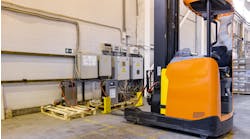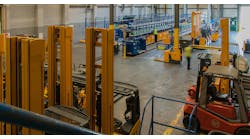Yes, You Can Achieve Instant ROI!
Leasing can help you improve operations without encumbering cash flow.
by Michael A. Hernan
Most integrated material handling projects today take more than a year to develop and implement and average two years to achieve their return-on-investment (ROI). A company may have to wait two to four years before the full expected return-on-investment shows up on its bottom line.
In today's market, there is an ever-increasing pressure to improve profits, now! Material handling systems are a hard sell to upper management and financial people, despite their acknowledged benefits. The large outlay of cash for something that will not give a positive accounting for two to four years greatly hinders commitment.
Many operations people feel they are in a "Catch-22" situation. They need to cut costs and be more efficient, but they cannot financially justify a project within the (short) terms that their financial people are comfortable with. Thus, the project dies and a "Band-Aid" approach is applied to a problem that requires a serious commitment to solve.
A new approach
There is a way most companies overlook to justify these improvement projects and obtain instant ROI on capital investment. It's called leasing.
Although the lift trucks that interface with these systems and the buildings that house them are leased with great regularity, leasing is a much-underutilized means of implementing large systems.
Why is leasing material handling systems not considered? Part of the reason is human nature's resistance to change. Leasing is considered an exotic means of financing a system. Another is that in the past, banks and financing institutions did not have an understanding of how these systems work and the great returns they can yield.
Times are changing
Many companies are in industries that are rapidly growing, very volatile and dynamic. Strategic planning three to five years out is almost impossible. Public companies are faced with meeting forecasted profits every quarter, or face a major rebuke from Wall Street. There is great pressure against sowing seeds for tomorrow, taking less in earnings now, and reaping greater rewards later. Wall Street and investors have not shown that type of patience.
New and more complex technologies are introduced into the supply chain every day. Although storage rack and conveyors have changed little in the last five years, software, information systems, bar codes and other technologies have changed greatly. Many companies must constantly upgrade their capital equipment to stay competitive.
In banking, financial institutions are starting to understand the value material handling projects add to client companies and are more eager to help arrange leasing packages. These institutions work with the end user and integrator (or systems' provider) to define the value that the automation project will provide to the end user. Then the institution will create a financing package based on credit worthiness, residual value of equipment, and other factors.
Let savings pay and cash flow
Clearly, cash flow is a key issue for many of today's companies. As the examples show, the savings from a system can pay most or all of the lease payments, often with money left over that goes right to the bottom line.
What most people do not realize is this simple fact, "The use of the equipment is what produces profits and value, not the ownership."
Ownership entails equipment that depreciates, technology that becomes obsolete and assets that can be taxed. Use provides productivity that yields profits. Ownership has no relevant value, but use does; the productivity that material handling equipment provides can transform a company.
More flexibility
Leases offer greater flexibility in their structure, terms and payment disbursements than loans offer. The majority of the expense in cash purchasing and loans comes at the front end when you have received little or no return from your improvement project. Leases can be structured so that the majority of the expenses comes at the back end, when you have received years of payback.
One other consideration is that a lease can include value-added services such as maintenance, insurance, training, disposal of equipment, even trained operators themselves. This all adds flexibility to your company's operations and more offerings for your customers.
Avoiding the taxman
Depending on your company's accounting practices and local tax laws, leasing can offer substantial tax advantages. Leased equipment is kept off the balance sheet. It may not be considered an asset, thus it may not be subject to asset taxes. State and local tax laws differ widely, however, so please speak with your tax adviser.
Also, the Internal Revenue Service maintains a seven-year depreciation schedule for most purchased equipment and systems. Companies that depend on new technology do not get to write off capital investment as aggressively as they need.
Advantages that add up
Implementing an integrated system financed by a lease can yield excellent paybacks and immediate returns. Leasing allows companies to better match time and technology.
The flexibility, hedge against obsolescence, and possible value-added services a lease offers are powerful advantages that a growing company in a dynamic market can utilize. However, leasing is not for everyone in every situation.
Every operation is unique, accounting practices differ, each system offers distinct returns, and companies calculate their return on investments differently. Sound judgment of all options is a foundation of good management practice.
Leasing is a wise consideration in funding operations improvement. For companies that want to improve their efficiency with the shortest ROI possible, leasing is a viable method to finance the improvement of your operations without encumbering your cash flow.
About the author
Michael A. Hernan is a senior project manager for Integrated Technologies Group, a leading systems design and implementation firm. He specializes in project development, system design and profit improvement. He has more than 18 years of experience as a project manager, design engineer and consultant.
For more information on leasing and material handling systems, you can call the author at 800 994-3006.


